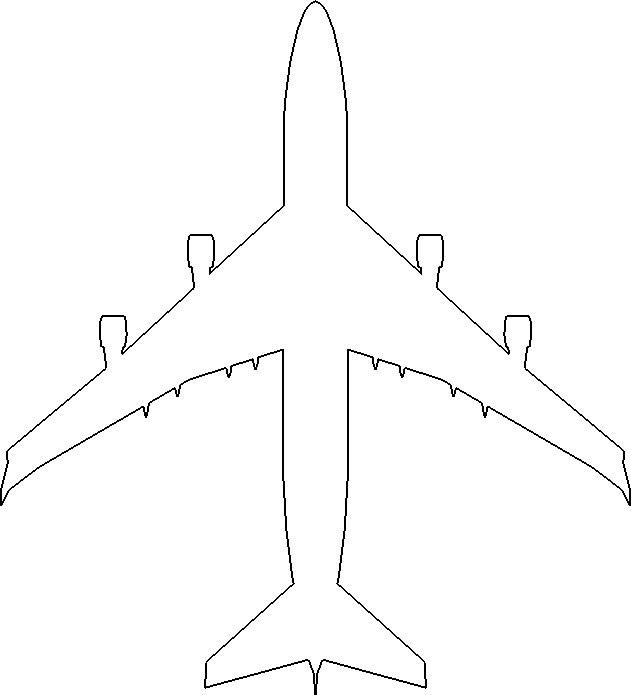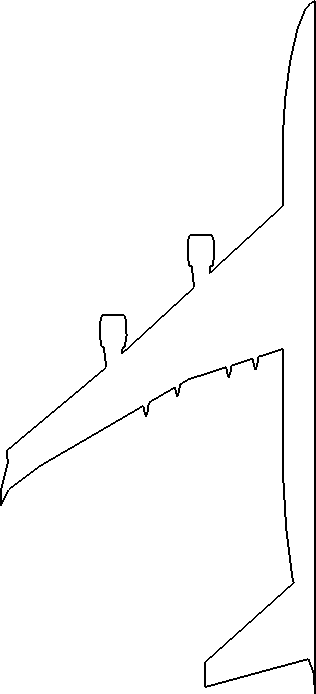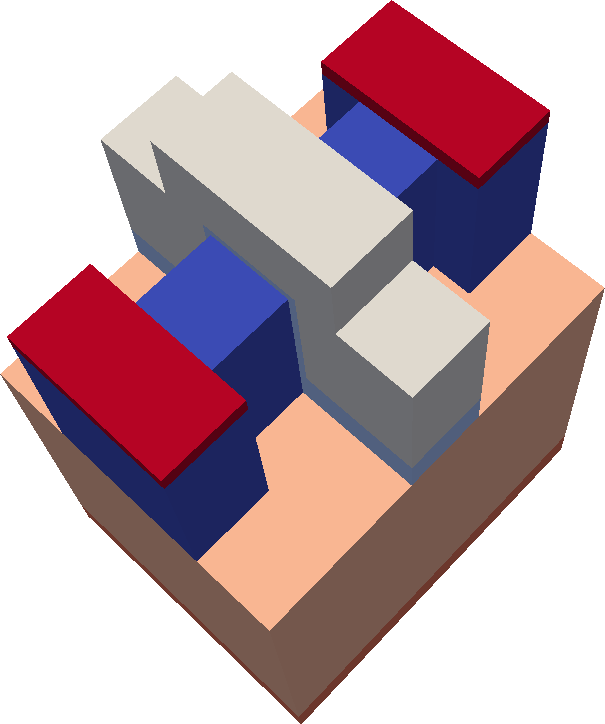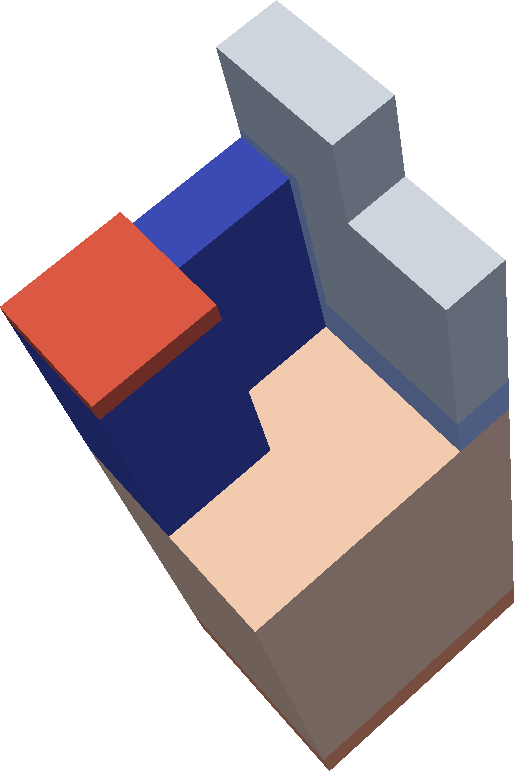Next: 7.3 Rotational Symmetries Up: 7 Results and Applications Previous: 7.1 Benchmark Setup Contents






The aircraft (top pictures) and the 2D MOSFET (middle pictures) have one reflective symmetry with a vertical reflecting hyperplane. The 3D FinFET (bottom pictures) has two reflective symmetries with reflecting hyperplanes which are orthogonal to each other. While the aircraft geometry does not have any regions, the 2D MOSFET and the 3D FinFET geometry have multiple regions (indicated by different colors) which reflect different material properties. |
![\begin{subfigure}
% latex2html id marker 15170
[b]{0.48\textwidth}
\centering
...
...enchmark/aircraft_time}
\caption{Runtime speedups 2D aircraft}
\end{subfigure}](img1322.gif)
![\begin{subfigure}
% latex2html id marker 15176
[b]{0.48\textwidth}
\centering
...
.../benchmark/aircraft_size}
\caption{Memory savings 2D aircraft}
\end{subfigure}](img1323.gif)
![\begin{subfigure}
% latex2html id marker 15184
[b]{0.48\textwidth}
\centering
...
...benchmark/mosfet_2d_time}
\caption{Runtime speedups 2D MOSFET}
\end{subfigure}](img1324.gif)
![\begin{subfigure}
% latex2html id marker 15190
[b]{0.48\textwidth}
\centering
...
...s/benchmark/mosfet_2d_size}
\caption{Memory savings 2D MOSFET}
\end{subfigure}](img1325.gif)
![\begin{subfigure}
% latex2html id marker 15198
[b]{0.48\textwidth}
\centering
...
...benchmark/finfet_3d_time}
\caption{Runtime speedups 3D FinFET}
\end{subfigure}](img1326.gif)
![\begin{subfigure}
% latex2html id marker 15204
[b]{0.48\textwidth}
\centering
...
...s/benchmark/finfet_3d_size}
\caption{Memory savings 3D FinFET}
\end{subfigure}](img1327.gif)
The left and right column shows runtime and memory benchmarks, respectively, for different objects and for varying cell counts. Expected savings (visualized by the green lines) are a factor two for the 2D aircraft and 3D MOSFET (both having one reflective symmetry) and a factor of four for the 3D FinFET (having two reflective symmetries). |
![\begin{subfigure}
% latex2html id marker 15219
[b]{0.48\textwidth}
\centering
...
...nchmark/aircraft_size_SI}
\caption{Memory savings 2D aircraft}
\end{subfigure}](img1328.gif)
![\begin{subfigure}
% latex2html id marker 15225
[b]{0.48\textwidth}
\centering
...
...enchmark/mosfet_2d_size_SI}
\caption{Memory savings 2D MOSFET}
\end{subfigure}](img1329.gif)
![\begin{subfigure}
% latex2html id marker 15233
[b]{0.85\textwidth}
\centering
...
...enchmark/finfet_3d_size_SI}
\caption{Memory savings 3D FinFET}
\end{subfigure}](img1330.gif)
In contrast to Figure 7.2 memory savings of the templated mesh are calculated based on the memory requirement of its structure instance rather than a (non-symmetric) conventionally generated mesh of the same geometry. The expected savings are visualized by green lines. |
![\begin{subfigure}
% latex2html id marker 15257
[b]{0.48\textwidth}
\centering
...
...ft_hist_symmetric}
\caption{Quality histogram, symmetric mesh}
\end{subfigure}](img1332.gif)
![\begin{subfigure}
% latex2html id marker 15263
[b]{0.48\textwidth}
\centering
...
...aircraft_hist}
\caption{Quality histogram, non-symmetric mesh}
\end{subfigure}](img1333.gif)
The mesh has been generated with a desired smallest angle of |
florian 2016-11-21